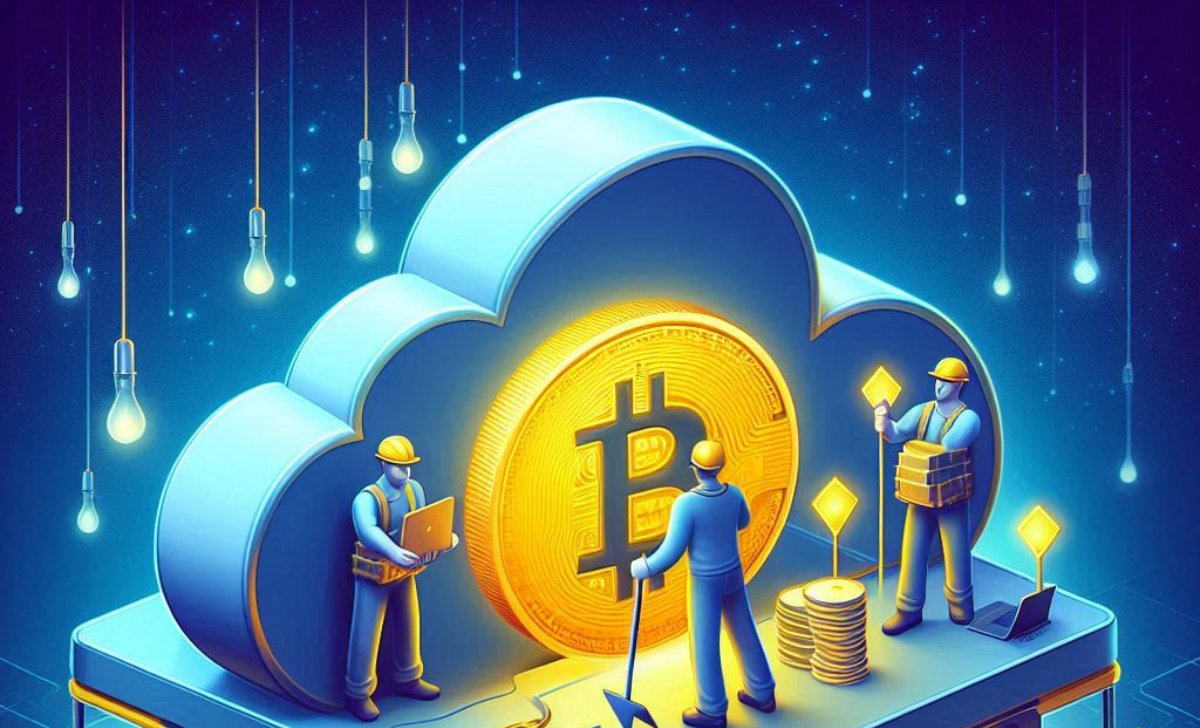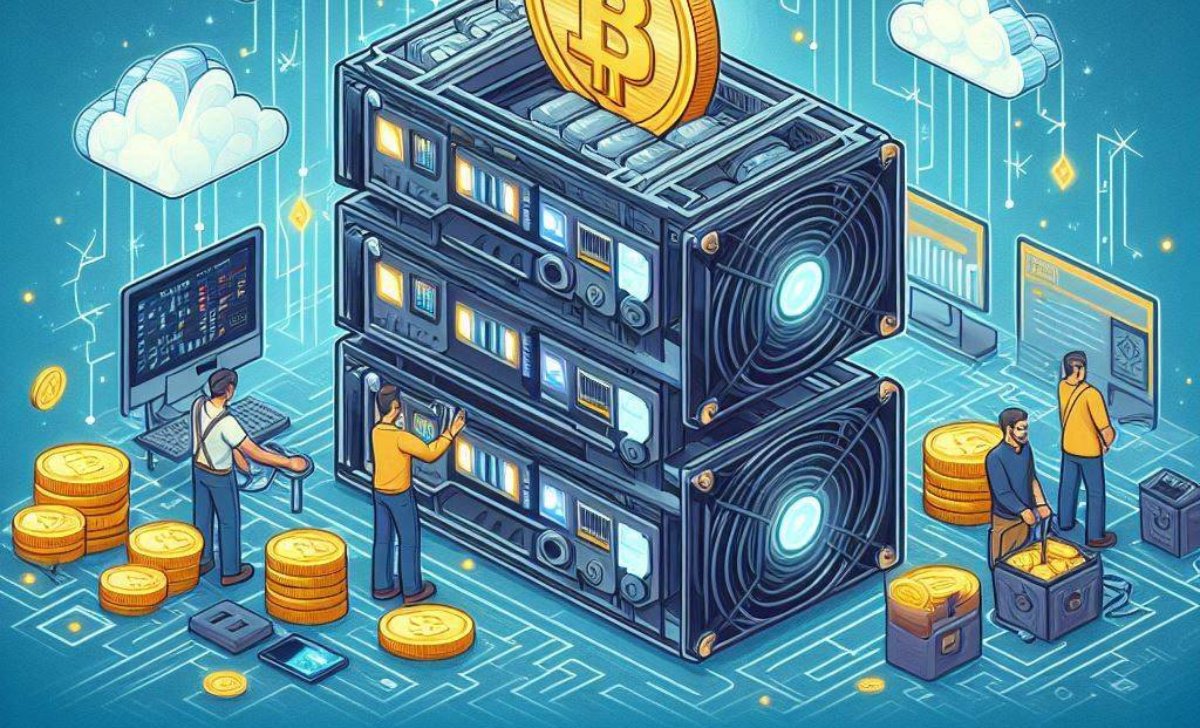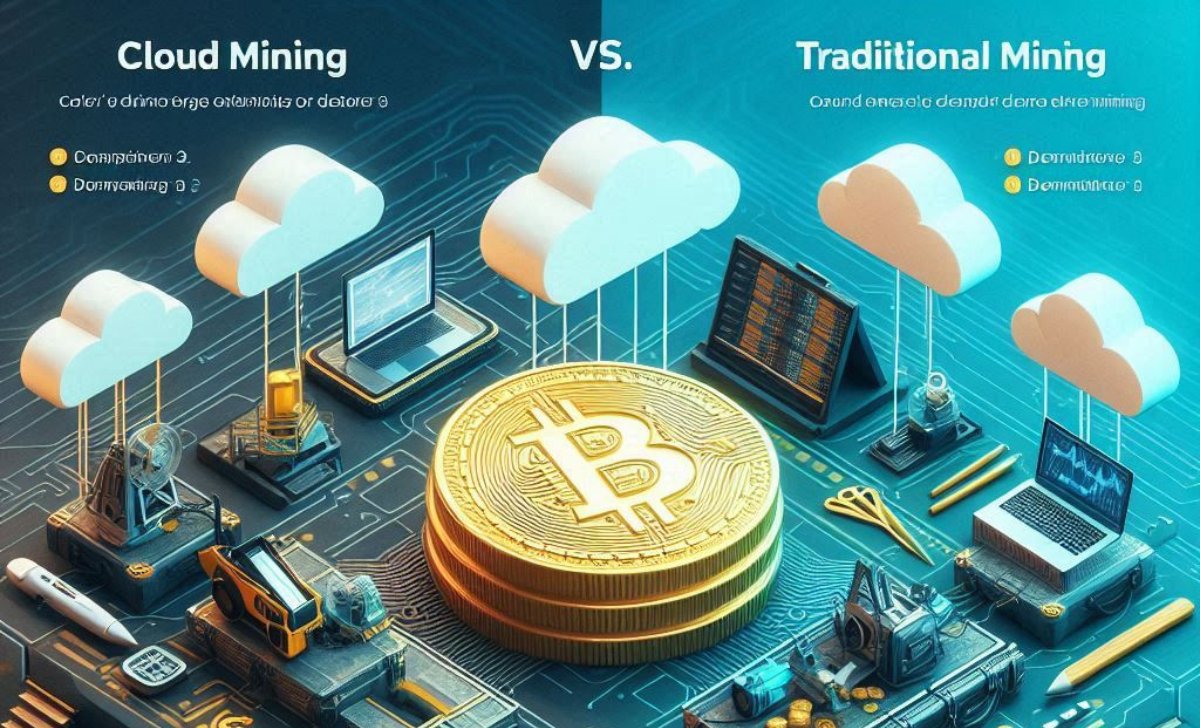Cloud Mining vs. Traditional Mining are two popular methods for earning cryptocurrency, each with its own advantages and challenges. While cloud mining offers convenience and lower upfront costs, traditional mining provides full control and potentially higher profits.
In this article, TopCoin9’ll help you explore how both methods work, compare their pros and cons, and help you decide which option is best based on factors like investment costs, profitability, control, scalability, and risks.
What is Cloud Mining?

Cloud mining is a remote mining service that allows users to rent mining power from third-party companies without owning or managing physical mining hardware. Instead of purchasing expensive equipment, individuals can subscribe to a mining contract and earn cryptocurrency rewards.
However, many investors still wonder, is cloud mining worth it? To answer this, let’s take a closer look at how it works and its potential benefits and risks.
How Cloud Mining Works
- Users purchase a mining contract from a cloud mining provider.
- The provider operates large-scale mining farms with high-performance mining rigs.
- Mining rewards are distributed to users based on their contract terms and hashing power contribution.
Types of Cloud Mining
- Hosted Mining: Users lease mining equipment from a provider, maintaining some level of control.
- Leased Hashing Power: Users buy a portion of the provider’s hash rate without managing hardware.
Cloud mining provides a hassle-free way to mine cryptocurrencies, but is it truly beneficial? Let’s examine its pros and cons.
Pros & Cons of Cloud Mining
Cloud mining provides a hassle-free way to mine cryptocurrencies without managing hardware, but it has risks. If you’re wondering how to mine Bitcoin affordably, this option may be worth considering. Let’s explore its pros and cons:
Pros
- Low Initial Investment: Cloud mining eliminates the need to buy costly mining rigs, cutting down upfront costs significantly. Users also save on electricity and cooling expenses, making it a budget-friendly option.
- Easy Setup & Maintenance: One of the key cloud mining benefits is its hassle-free setup, as the provider handles the entire mining process. This eliminates the need for technical expertise, making cloud mining accessible even to beginners in crypto space.
- Scalability: Users can adjust their mining power by purchasing more or fewer contracts as needed. This flexibility allows for better control over investment and potential earnings.
- Less Energy Consumption: Since miners don’t operate hardware themselves, they avoid high electricity costs. This makes cloud mining a more energy-efficient option compared to traditional mining.
Cons
- Risk of Scams & Fraud: Many cloud mining services have been exposed as Ponzi schemes, putting investors at risk. Without proper research, users may fall victim to unreliable providers.
- Lower Profit Margins: Mining providers take a percentage of earnings, which reduces overall profitability. Unlike traditional mining, users don’t receive the full rewards from mining activities.
- Lack of Control: Cloud miners have no say in how mining operations are managed or optimized. They must fully trust the provider to run operations efficiently and fairly.
- Contract Risks: Some cloud mining contracts include hidden fees or unfair terms that can limit earnings. If market conditions change, users may be locked into unprofitable agreements.
Cloud mining is an attractive option for those who want passive crypto income without hardware management. However, is traditional mining a better alternative? Let’s explore.
What is Traditional Mining?

Traditional mining, also known as hardware mining, involves setting up and operating physical mining rigs to validate blockchain transactions and earn cryptocurrency rewards. Unlike cloud mining, traditional miners have complete control over their operations but must also manage costs and maintenance.
How Traditional Mining Works
- Miners invest in crypto mining hardware like ASICs (Application-Specific Integrated Circuits) or GPUs (Graphics Processing Units).
- They set up the equipment in a suitable environment with adequate power supply and cooling.
- Mining software runs computations, solving complex mathematical problems to secure blockchain.
- Successful miners receive block rewards, generating cryptocurrency profits.
While traditional mining provides full control and potentially higher rewards, it also comes with significant challenges. Let’s explore that in the next section.
Pros & Cons of Traditional Mining
When comparing Cloud Mining vs. Traditional Mining, traditional mining offers greater control and higher profit potential but requires significant investment and technical expertise. Let’s explore its pros and cons.
Pros
- Higher Profit Potential: Miners receive the full rewards from mining activities without sharing earnings with third-party providers. This allows for higher profitability if the operation is well-managed.
- Full Control: Miners have complete control over their hardware, mining pools, and optimization strategies. This flexibility enables them to adjust operations for maximum efficiency and profitability.
- Long-Term Viability: Unlike cloud mining contracts, physical mining rigs remain assets that can be resold or repurposed. This makes traditional mining a potentially sustainable long-term investment.
- Supports Network Decentralization: By maintaining their own mining operations, traditional miners help secure and decentralize blockchain networks. This reduces reliance on centralized mining services.
Cons
- High Initial Investment: Setting up a mining operation requires purchasing expensive hardware, paying for electricity, and ensuring proper cooling. This makes traditional mining less accessible to small investors.
- Technical Challenges: Operating and maintaining mining rigs demand a good understanding of hardware and software. Beginners may struggle with troubleshooting issues and optimizing performance.
- Energy Intensive: Traditional mining consumes a large amount of electricity, leading to high operational costs. This also raises concerns about its environmental impact.
- Regulatory Risks: Some governments have restricted or banned crypto mining due to energy concerns and regulatory issues. Miners must stay updated on legal changes to avoid unexpected shutdowns.
With both mining methods having their own pros and cons, how do they compare directly? Let’s break it down in the next content!
Cloud Mining vs. Traditional Mining: A Detailed Comparison

Both Cloud Mining vs. Traditional Mining offers unique benefits and challenges, making it essential to compare them side by side. The table below highlights key differences to help you determine which option best suits your needs.
| Feature | Cloud Mining | Traditional Mining |
| Initial Cost | Low – No hardware needed | High – Requires expensive mining rigs |
| Maintenance | None – Provider handles it | High – Requires constant upkeep |
| Profitability | Moderate – Shared revenue with provider | High – Full control over earnings |
| Control | Low – Dependent on provider | High – Full operational control |
| Scalability | High – Easy to buy more hashing power | Moderate – Expanding requires additional hardware |
| Risk Level | Moderate to High – Potential scams | High – Market volatility and electricity costs |
| Technical Knowledge | Not required | Required for setup & maintenance |
Cloud mining is perfect for those who want a hands-off approach, while traditional mining benefits those willing to invest time and effort. But which one should you choose?
Should You Choose Cloud Mining or Traditional Mining?

Your choice between Cloud mining vs. Traditional mining depends on your budget, technical expertise, and risk tolerance. Here’s a quick guide to help you decide:
Choose Cloud Mining if:
- You prefer passive income without hardware management.
- You have a limited budget and don’t want high electricity costs.
- You want flexibility and scalability in your mining investment.
Choose Traditional Mining if:
- You have the capital to invest in mining rigs and electricity.
- You want full control over your mining operations.
- You’re willing to manage hardware maintenance and technical issues.
In conclusion, Cloud Mining vs. Traditional Mining each has its own strengths, depending on your budget, technical skills, and risk tolerance. Whether you prefer the convenience of cloud mining or the control of traditional mining, understanding their pros and cons is key to making the right choice. Stay tuned for our latest articles to keep up with the evolving world of cryptocurrency mining!

Ethan Carter, a seasoned crypto analyst with 7+ years of experience, has a deep understanding of market trends, DeFi, and blockchain technologies. His expert insights and market forecasts have helped thousands of traders and investors make informed decisions.
Email: [email protected]












